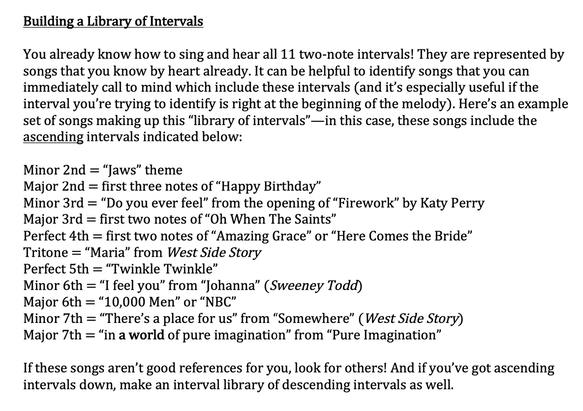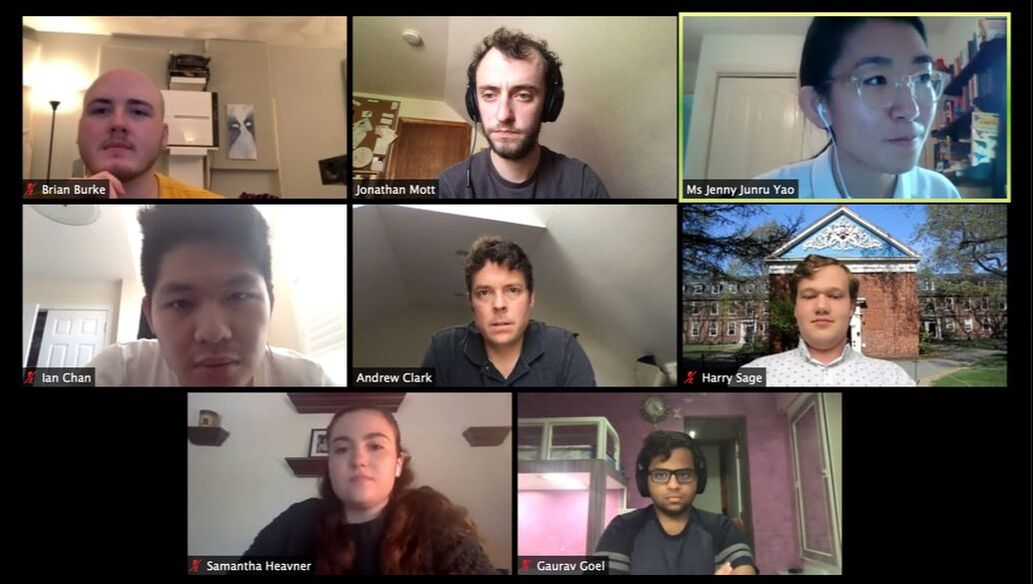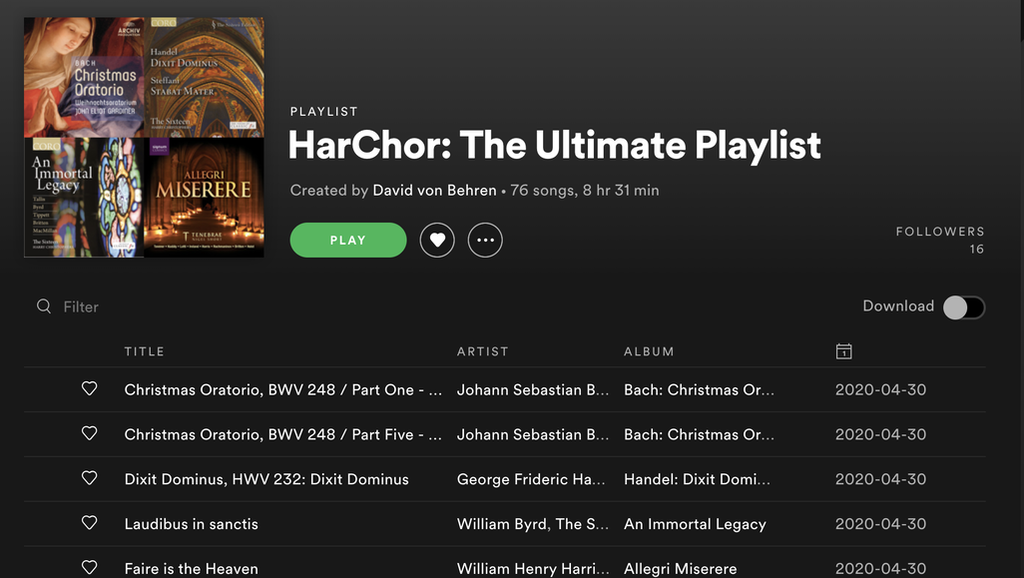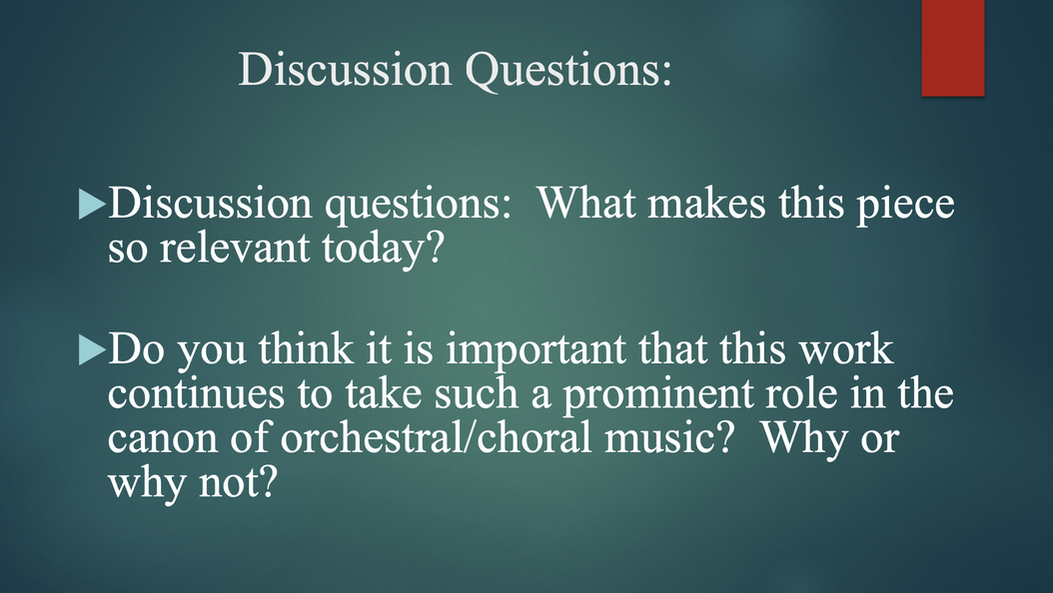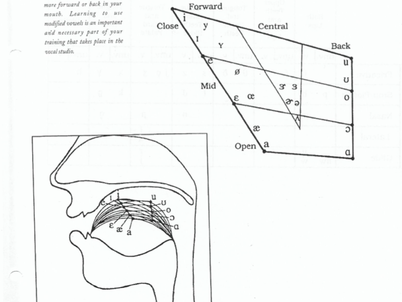Education and enrichment programs provided by Harvard Choruses staff members outside of our weekly meetings. Each CALM project offered four sessions or more over the span of four weeks in which students and staff engaged with a variety of topics.
CALM Project modules offered during Spring 2020:
Ear Training, Sight Reading, and Music Theory – led by Nathan Reiff
Contemporary Composition and Technique – led by Jonathan Mott
Repertoire and Programming – led by Margaret Weckworth and David von Behren
Vocal Function and the International Phonetic Alphabet – led by Elizabeth Eschen
CALM Project modules offered during Spring 2020:
Ear Training, Sight Reading, and Music Theory – led by Nathan Reiff
Contemporary Composition and Technique – led by Jonathan Mott
Repertoire and Programming – led by Margaret Weckworth and David von Behren
Vocal Function and the International Phonetic Alphabet – led by Elizabeth Eschen
Ear Training, Sight Reading, and Music Theory
The ear-training and sightsinging CALM project aimed to provide students with a variety of exercises and tools to help them to develop their skills through their own practice. We focused on connecting the brain, ear, and voice across multiple sessions on topics including melodic intervals, rhythm, harmony, and developing an individual practice routine. In each meeting, students had the opportunity to try out various exercises in a framework that they could continue to explore on their own after the conclusion of the session. The goal of the project was to meet students at their level of comfort and ability with ear-training and sightsinging, offering them tools that are adaptable to many different levels of experience.
Contemporary Composition and Technique
This spring, four members of the Harvard Choruses undertook a four-week composition project under the guidance of composer, and resident conductor of the Harvard-Radcliffe Collegium Musicum, Jonathan Mott. The task was simple (but not easy): craft a four-voice choral work that comes in at under two-and-a-half minutes. Brian Burke (HGC), Samantha Heavner (Collegium), Harry Sage (HGC), and Jenny Yao (RCS) each worked quickly to find a text that both resonated with them and could be set economically, within the parameters of the project. The final texts came from varied sources: the apocryphal Gospel of Thomas, Sara Teasdale, Zora Neale Hurston, and (yes) a simple example sentence, “I hate it when it rains.” Over the course of the four weeks, composers had the chance to initiate, develop, or expand their individual compositional palliates in lessons that ranged from discussions about voice leading and counterpoint to how to plan an overarching structure. At the end of the four weeks, the composers had the chance to share MIDI renderings of their pieces with one another in a mini Zoom recital, with the goal to perform them in-person in some form when we’re finally able to sing together again.
Repertoire and Programming
The repertoire and programming module sought to provide students with the opportunity to explore different types of choral music across the ages and cultures, ideas for programming, and how this fits into the ongoing work of the Harvard Choruses and beyond. During our first two sessions we discussed and held live listening sessions on repertoire for upcoming Harvard Choruses performances, both combined and individual choir projects – Beethoven’s Symphony No. 9, Linda Tutas Haugen’s Anne Frank: A Living Voice, Thomas Lloyd’s Bonhoeffer, and Handel’s Messiah. Students engaged in critical thinking and reflection on the history and content of each piece and its relevance today. The final two sessions delved into an abbreviated adventure through choral music history where we focused on not only the timeline of choral music history and distinct sounds and pieces from the Medieval to Modern periods, but also music from around the world with a spotlight on “a new normal” and choir diversity highlighted in Prof. André de Quadros’ Choral Music in a Global Perspective. The entire project culminated with the release of Spotify playlists for students to enjoy and continue their listening experience and exploration.
VOCAL FUNCTION AND THE INTERNATIONAL PHONETIC ALPHABET
The vocal function and IPA CALM project did a deep dive into the systems of vocal production and diction, two of the fundamental pieces of choir singing. While we regularly sing exercises in the beginning of a rehearsal, we often don’t know what is happening in the voice or what is the desired technical result. We need time to explore the science and the terminology, as well as the sensations of applying this to our own singing. With this exploration and self-awareness as our goal, each of the four weeks included a guided lecture, vocal exercises, and a song for applying the concepts. Singers received a recorded video in the beginning of each week, with a live follow-up with real singing and sharing in a studio class format. The hope is that when we are together again, our knowledge will be greater and our voices will be fuller than ever before!
Our weekly topics:
WEEK 1: How Sound is Made - the power, source, filter sub-systems
WEEK 2: Introduction to Diction & the International Phonetic Alphabet (IPA)
WEEK 3: Real-life Solo Application & Analysis
WEEK 4: Real-life Choral Application & Analysis
Our class repertoire:
Exercises from Sieber, Vaccai, Marchesi
Black is the Color of My True Love’s Hair - arr. Jean Shackleton
Ici-bas - Gabriel Fauré
An die Musik - Franz Schubert
The Impossible Dream - Joe Darion and Mitch Leigh
If Ye Love Me - Thomas Tallis
Selected resources:
The Voice Book - Kate DeVore and Starr Cookman
Foundations in Singing - John Glenn Paton
Diction for Singers - Joan Wall, Robert Caldwell
Choral Adjudication Rubrics (RI-ACDA)
Accompaniments by David von Behren
Our weekly topics:
WEEK 1: How Sound is Made - the power, source, filter sub-systems
WEEK 2: Introduction to Diction & the International Phonetic Alphabet (IPA)
WEEK 3: Real-life Solo Application & Analysis
WEEK 4: Real-life Choral Application & Analysis
Our class repertoire:
Exercises from Sieber, Vaccai, Marchesi
Black is the Color of My True Love’s Hair - arr. Jean Shackleton
Ici-bas - Gabriel Fauré
An die Musik - Franz Schubert
The Impossible Dream - Joe Darion and Mitch Leigh
If Ye Love Me - Thomas Tallis
Selected resources:
The Voice Book - Kate DeVore and Starr Cookman
Foundations in Singing - John Glenn Paton
Diction for Singers - Joan Wall, Robert Caldwell
Choral Adjudication Rubrics (RI-ACDA)
Accompaniments by David von Behren
